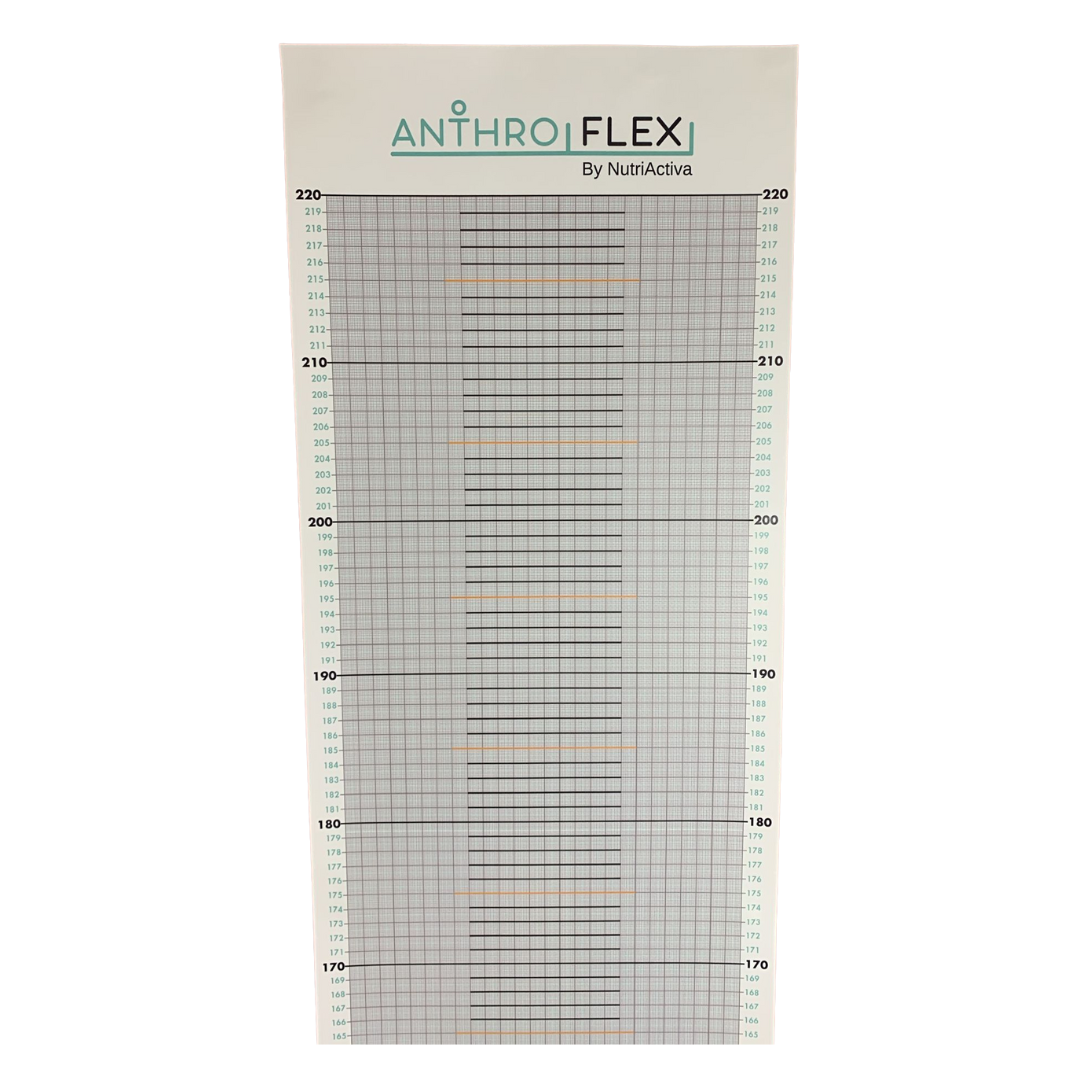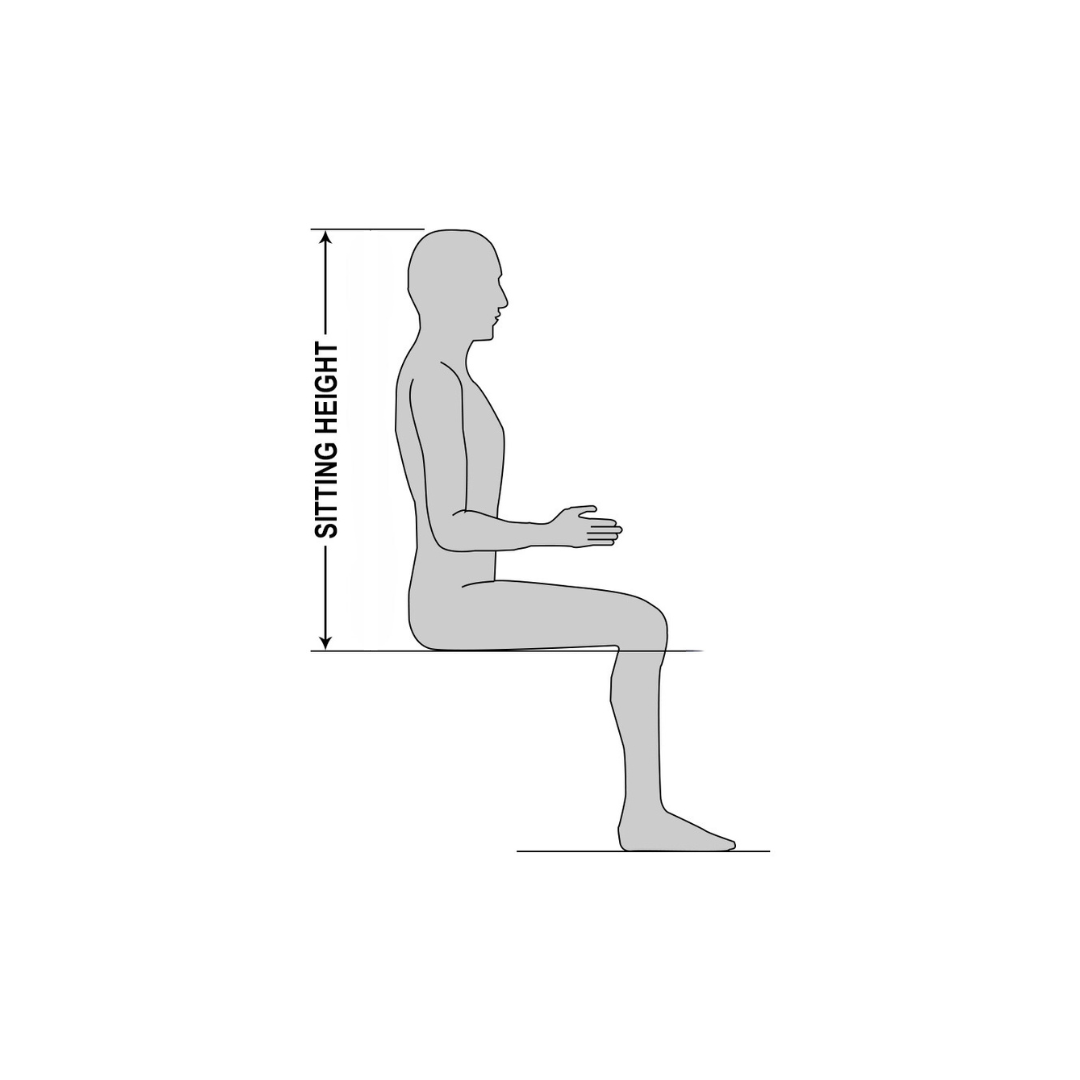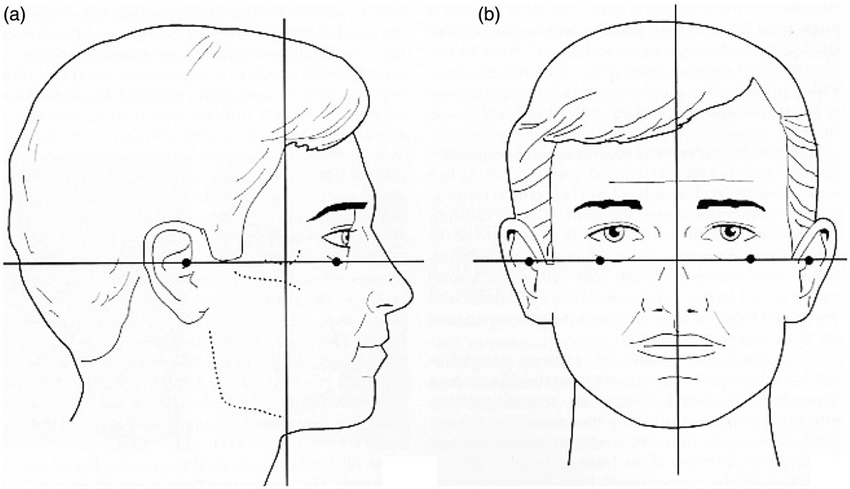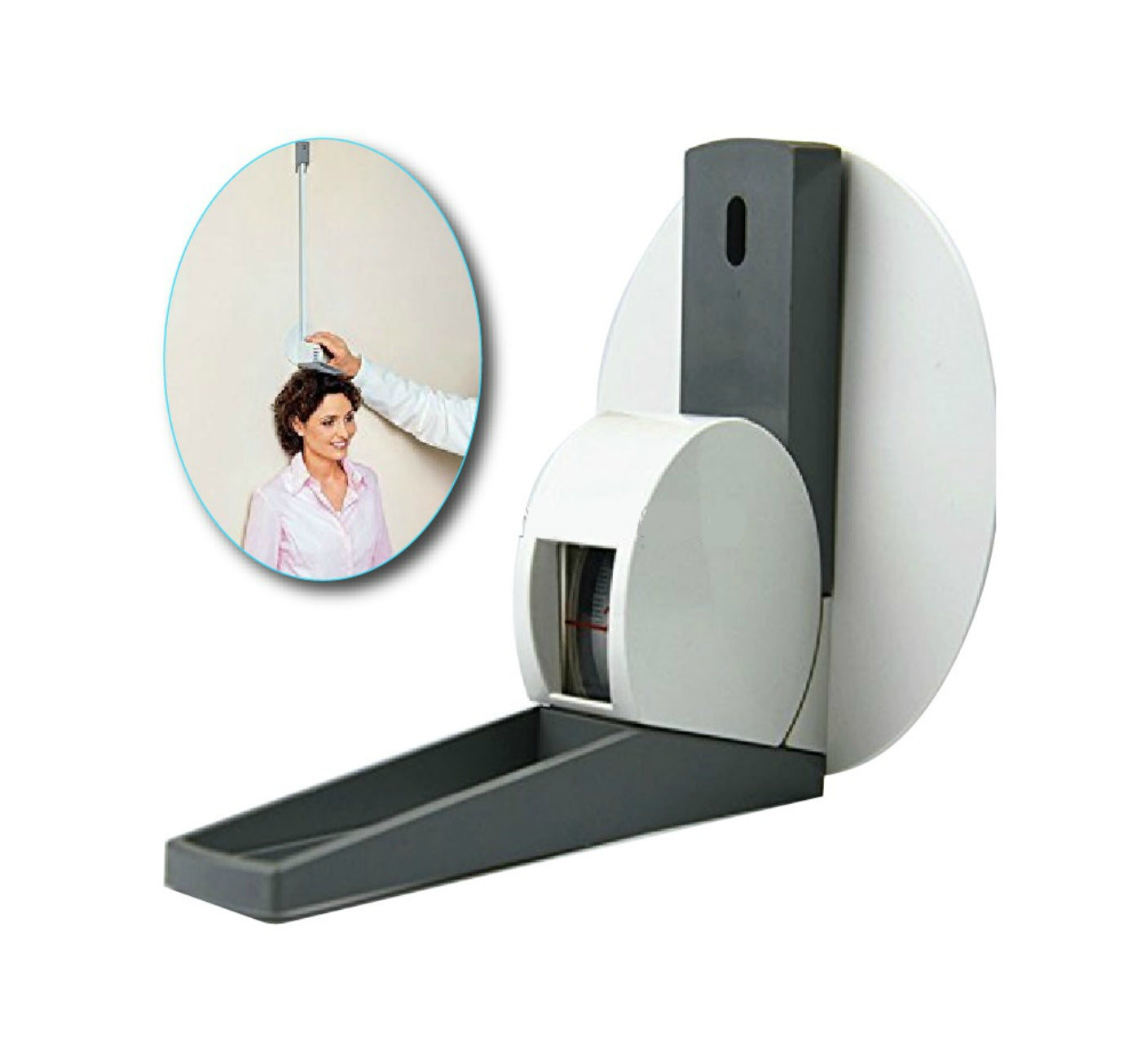Why Sitting Height Matters in Anthropometry: From Growth Studies to Body Composition
Sitting height may seem like a simple measurement, but in anthropometry it plays a crucial role in understanding growth patterns, proportionality, and body composition. For professionals working in sports nutrition, fitness, or health sciences—and for ISAK certified anthropometrists —mastering this measurement is essential.
What Is Sitting Height?
Sitting height is the vertical distance from the seated surface (a flat bench or anthropometric box) to the top of the head in the Frankfort plane. Unlike standing height, which reflects overall stature, sitting height isolates the length of the trunk, head, and neck relative to the lower limbs.
- Growth assessment: Distinguishes trunk vs. leg growth—especially useful in youth monitoring.
- Proportionality studies: Ratios such as sitting height / standing height highlight population, ethnic, and athletic differences.
- Body composition prediction: Used as an input in equations estimating fat mass, lean mass, and resting metabolic rate.
Applications in Sports and Health
- Pediatric growth monitoring: Identifies delayed or accelerated trunk growth.
- Sports performance: Proportions (e.g., relatively longer trunks in swimmers) can inform talent ID and programming.
- Clinical practice: Supports height estimation for patients unable to stand.
- Research & population studies: Tracks secular trends and environmental influences on development.
How to Measure Sitting Height (ISAK protocol)
Equipment
- Stadiometer or wall meter
- Anthropometric headsquare (also called a right-angle headboard)
- Anthropometry bench (also called sitting height bench or box)
- Level floor/wall surface
Positioning
- Subject sits upright on the bench; knees together; thighs horizontal; feet flat on the floor.
- Head in the Frankfort plane (lower orbit to upper margin of ear canal aligned horizontally).
Procedure
- Confirm neutral pelvis (no posterior tilt); shoulders relaxed, spine elongated without overextension.
- Lower the headboard gently onto the crown, achieving full contact without compressing soft tissue.
- Record to the nearest 0.1 cm; take duplicate measures.
- If the difference exceeds 0.5 cm, repeat until two readings agree within tolerance; record the median.
Common Errors to Avoid
- Slouched posture or leaning back against a wall.
- Feet not flat (affects pelvic tilt and trunk length).
- Incorrect head position (Frankfort plane not horizontal).
- Pressing the headboard too firmly, compressing hair or soft tissue.
Professional Standards and Best Practices
Follow ISAK principles of precision, repeatability, and standardization. Use calibrated, professional-grade equipment, document environmental conditions, and maintain consistent technique across measurers and sessions—especially in clinical trials and certification coursework.
Key Takeaways
- Sitting height is central to growth analysis, proportionality, and certain body composition models.
- ISAK-aligned positioning and duplicate measurements improve reliability.
- Attention to head/foot position and pelvic neutrality reduces error.
- Valuable in pediatrics, sport selection, clinical estimation, and research.






